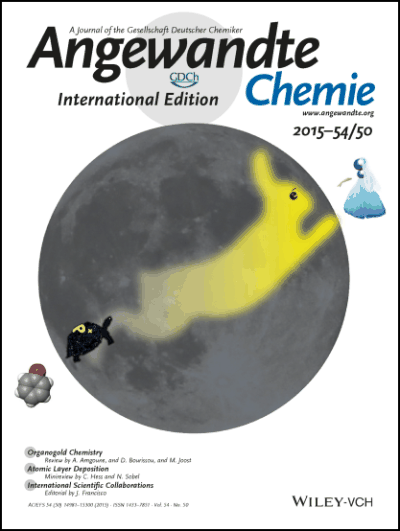Reactions of the gold(I) triflimide complex [Au(NTf2)(PMe2Arequation image)] (1) with the gold(I) hydrocarbyl species [AuR(PMe2Arequation image)] (2 a–2 c) enable the isolation of hydrocarbyl-bridged cationic digold complexes with the general composition [Au2(μ-R)(PMe2Arequation image)2][NTf2], where Arequation image=C6H3-2,6-(C6H3-2,6-iPr2)2 and R=Me (3), CH[DOUBLE BOND]CH2 (4), or C[TRIPLE BOND]CH (5). Compound 3 is the first alkyl-bridged digold complex to be reported and features a symmetric [Au(μ-CH3)Au]+ core. Complexes 4 and 5 are the first species of their kind that contain simple, unsubstituted vinyl and acetylide units, respectively. In the series of complexes 3–5, the bridging carbon atom systematically changes its hybridization from sp3 to sp2 and sp. Concomitant with this change, and owing to variations in the nature of the bonding within the [Au(μ-R)Au]+ unit, there is a gradual decrease in aurophilicity, that is, the strength of the Au⋅⋅⋅Au bonding interaction decreases. This change is illustrated by a monotonic increase in the Au–Au distance by approximately 0.3 Å from R=CH3 (2.71 Å) to CH[DOUBLE BOND]CH2 (3.07 Å) and C[TRIPLE BOND]CH (3.31 Å).
Methyl-, Ethenyl-, and Ethynyl-Bridged Cationic Digold Complexes Stabilized by Coordination to a Bulky Terphenylphosphine Ligand

IIQ
M.F. Espada, J. Campos, J. López-Serrano, M.L. Poveda, E. Carmona
Angew. Chem. Int. Ed. 2015, Vol. 0, doi:10.1002/anie.201508931
Angew. Chem. Int. Ed. 2015, Vol. 0, doi:10.1002/anie.201508931


